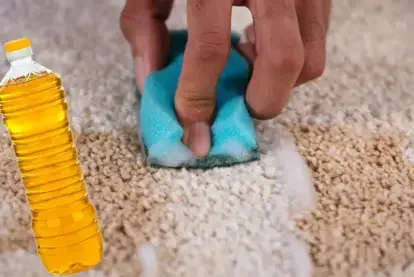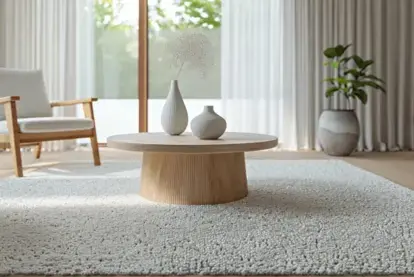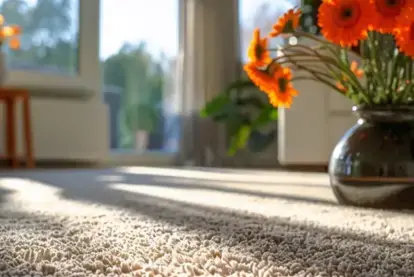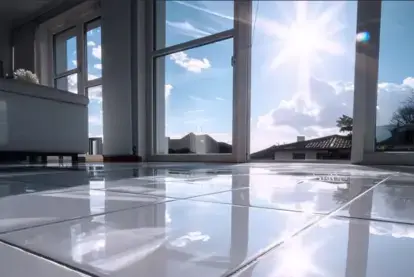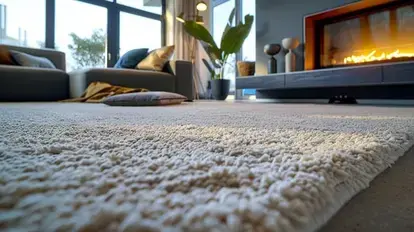
Care and Maintenance of Carpets & Rugs
Contact COIT for a professional cleaning!
Rugs bring warmth, color, and comfort to your home, but everyday wear, spills, and sunlight can quickly dull their look if you don’t care for them properly. Regular maintenance not only keeps your rugs looking beautiful but also extends their life and protects your floors.
Here’s how to care for rugs the right way and when it’s best to call the professionals at COIT.
Routine Rug Care
Vacuum Regularly
Vacuum once a week in low-traffic areas and two to three times per week where people walk more often. Use a low-suction or suction-only vacuum setting to protect fibers and avoid beater bars on delicate rugs like wool, silk, or hand-knotted designs.
- For shag rugs, use a hand-held attachment.
- Don’t forget the underside—flip your smaller rugs once a month to remove trapped dust.
Rotate Your Rugs
Rotate your rugs every six months to promote even wear and prevent fading from sunlight. If your rug sits in direct light, rotate it more often.
Use a Rug Pad
A quality rug pad keeps rugs in place, adds cushioning, and reduces friction that wears down the backing. It also protects hardwood and tile floors from scratches.
Protect from Sunlight
Prolonged UV exposure fades colors, so you should always close your curtains during the brightest hours or use window film to protect rugs in sunny rooms.
Shake Out Small Rugs
For your lightweight rugs, take them outdoors and shake them to release any deep-seated dirt and dust once a week.
Spot Cleaning Spills and Stains
Act Fast
Blot all spills immediately before they soak in. The faster you act, the less likely a stain will set.
Blot, Don’t Rub
Use a clean, white cloth or paper towel and gently blot from the outside in. Rubbing can damage fibers and spread the stain.
Use a Mild Cleaner
Mix a few drops of gentle detergent with warm water and test it on a small, hidden area first. If it’s safe, apply the solution to the stain and blot until it lifts. Make sure you always avoid bleach or ammonia as they can discolor and weaken rug fibers.
Rinse and Dry
After cleaning, dab the spot with clean water to remove residue, then let the area air dry completely. Never use high heat or leave rugs damp because moisture can cause mold or mildew.
Deep Cleaning Rugs
Check the Care Label
Always start by reading the care tag on your rug. Some rugs, like wool or jute, need special cleaning products or professional care.
Clean Annually
Schedule a deep cleaning at least once a year, or more often if you have pets, allergies, or heavy traffic. For synthetic area rugs, you can often use a carpet shampooer at home, but for handmade, antique, or delicate rugs, professional cleaning is usually safest.
Avoid Harsh Chemicals
Strong solvents, steam, and bleach can strip color or damage fibers on rugs, so always stick to mild products and gentle cleaning methods.
Dry Completely
Lay your rugs flat to air dry on both sides and never hang heavy rugs from one edge as they can stretch out and lose shape.
Material-Specific Rug Care
Wool Rugs
- Vacuum weekly with a gentle suction-only vacuum.
- Avoid high heat and over-wetting as wool can shrink.
- Blot stains quickly with mild detergent and water.
Synthetic Rugs (Nylon, Polyester, Olefin)
- More durable and easier to clean.
- Machine wash small rugs on a gentle cycle, but always check the label first.
- Rinse thoroughly and air dry.
Handmade or Oriental Rugs
- Keep away from direct sunlight and moisture.
- Use a rug pad to protect the weave.
- Rotate quarterly for even fading.
- Have them professionally cleaned every 12–18 months.
Natural Fiber Rugs (Jute, Sisal, Seagrass)
- Vacuum with a brushless attachment.
- Avoid water as these types of fibers can warp or discolor.
- Blot stains with dry cleaning powder or a small amount of white vinegar.
Prevent Damage and Odors
- Adopt a no-shoes policy. Outdoor dirt and grit are leading causes of fiber wear.
- Keep humidity in check. Use a dehumidifier to prevent mold and mildew.
- Lift your furniture occasionally. Heavy furniture leaves dents, so use coasters or pads under legs.
- Address pet accidents quickly. For persistent odor or deep stains, COIT’s odor removal service can help.
Signs Your Rug Needs Professional Cleaning
Call a professional carpet and rug cleaning service like COIT if you notice:
- Lingering odors or pet smells
- Dull color even after vacuuming
- Allergies or sneezing near the rug
- Heavy traffic areas turning darker
- Frayed edges or fiber damage
- Visible stains that reappear after drying
Professional cleaning removes deep dirt, bacteria, and allergens that home cleaning can’t reach and restores texture and color without damaging fibers.
Schedule Your Area Rug Cleaning With COIT Today
When to Call the Professionals
Even with great at-home care, rugs benefit from an expert touch. COIT’s certified technicians use specialized tools and eco-friendly products to deep-clean rugs of every type, from wool and silk to synthetic and oriental designs.
We lift stains, restore color, and leave your rug fresh, clean, and looking like new.
Ready to Give Your Rug a Fresh Start?
Book a professional rug cleaning with COIT today. Call 1-800-FOR-COIT or request a quote online to see the difference a deep clean makes.
FAQs about Caring for Rugs
How do you maintain a rug?
To maintain a rug, vacuum it regularly, rotate it twice a year, and protect it from direct sunlight. Blot any spills as soon as they happen and use a mild cleaner for stains. A rug pad helps prevent wear and keeps it in place, and be sure to deep clean once a year to remove dirt trapped deep in the fibers.
How to store rugs when not in use?
To store your rugs safely, clean and dry them first to prevent mold or odor. Roll the rug (never fold it!) with the pile facing inward, and wrap it in breathable material like cotton or muslin—not plastic—to allow air circulation. Store it in a cool, dry place away from direct sunlight and pests.
How often do rugs need to be washed?
Most rugs need a full wash or professional cleaning once a year, but high-traffic or pet-friendly homes might need it twice a year. Frequent vacuuming and quick spill cleanup between deep cleans will keep your rug fresh and extend its life.
Can I put an 8x10 rug in the washing machine?
No, an 8x10 rug is too large for a standard washing machine. Oversized rugs should be cleaned professionally or spot cleaned at home. Washing such a large rug in a machine could damage both the rug and your washer due to its weight when wet.
